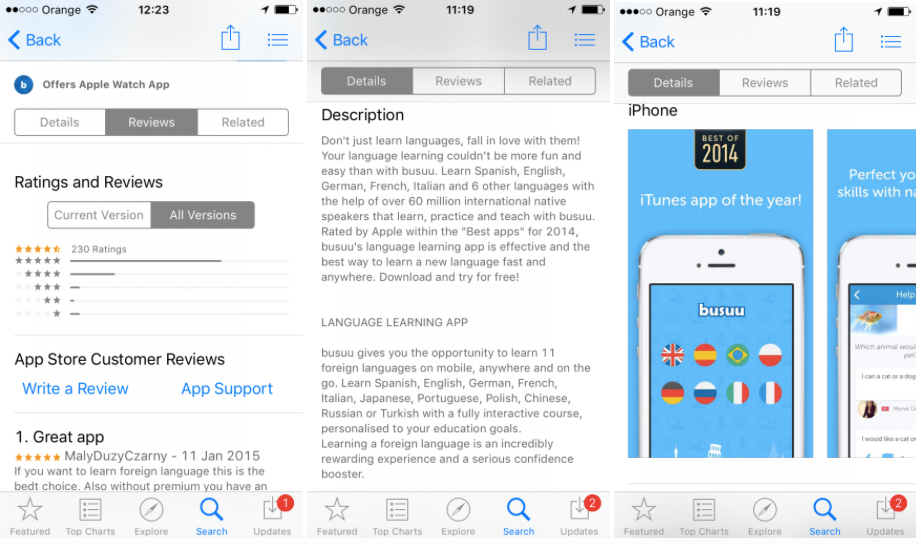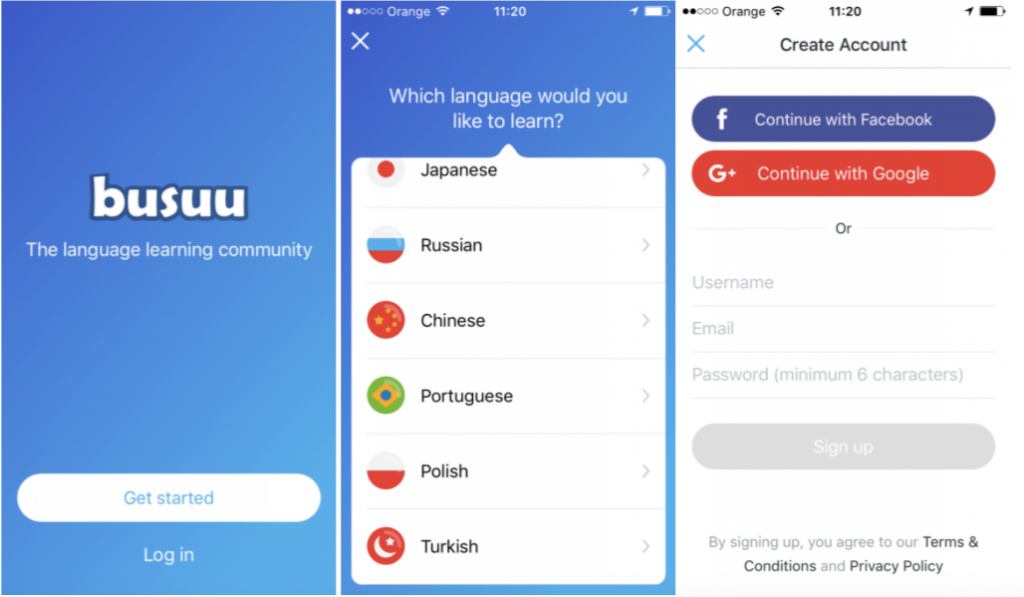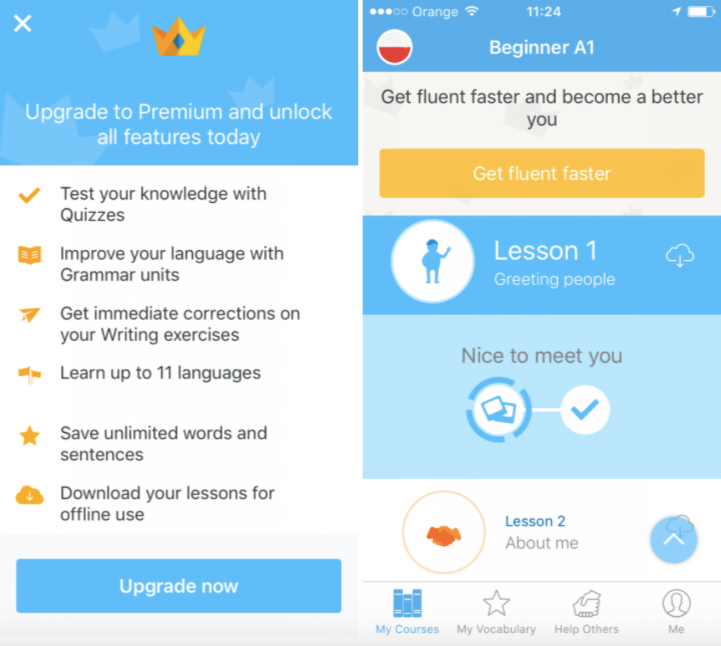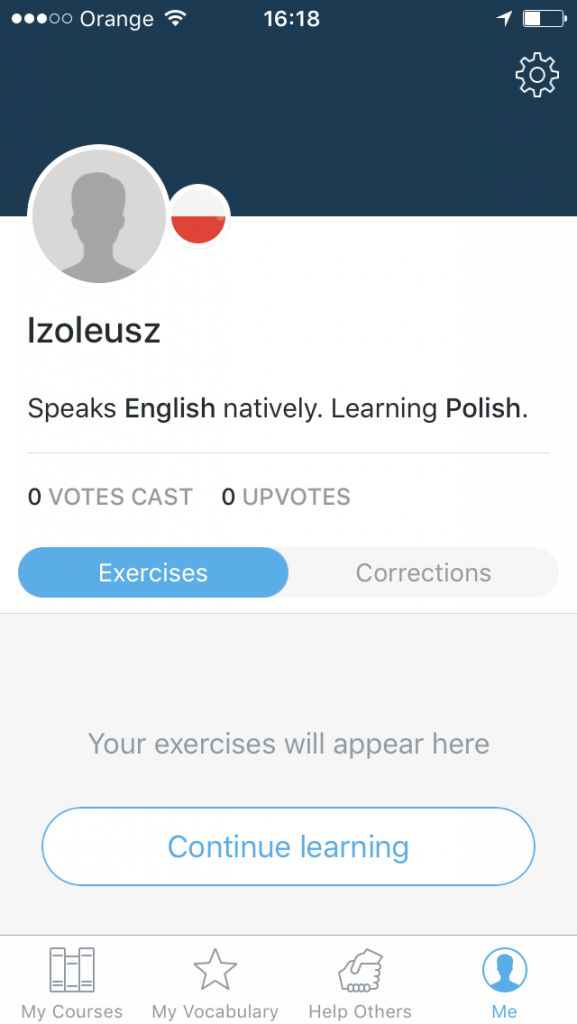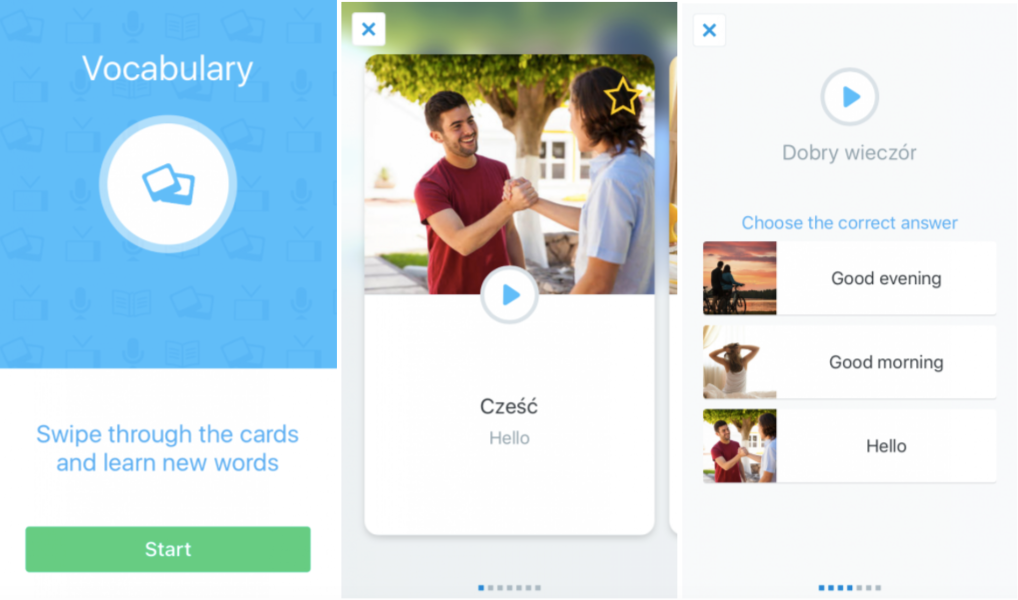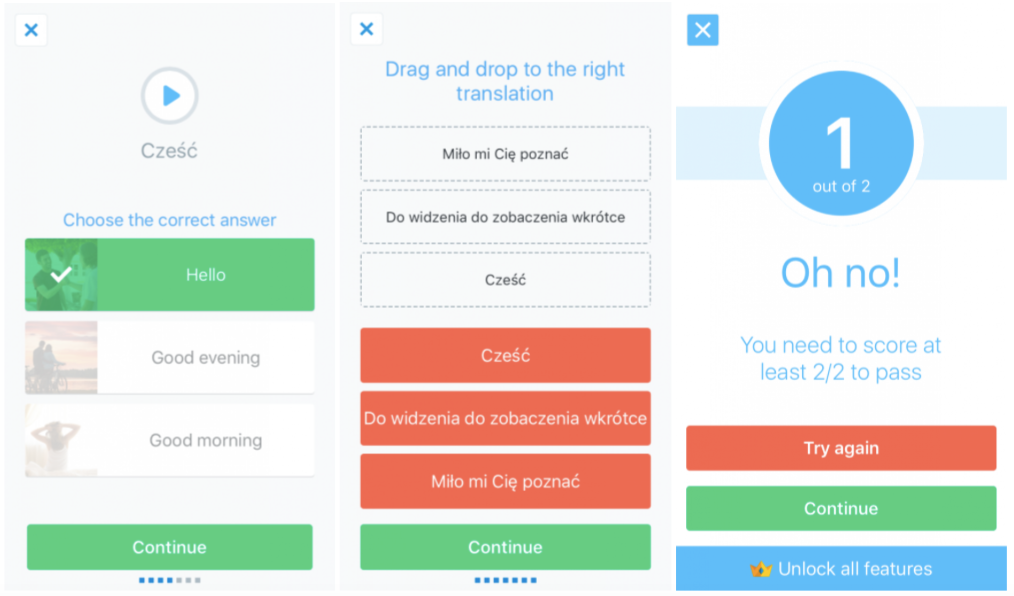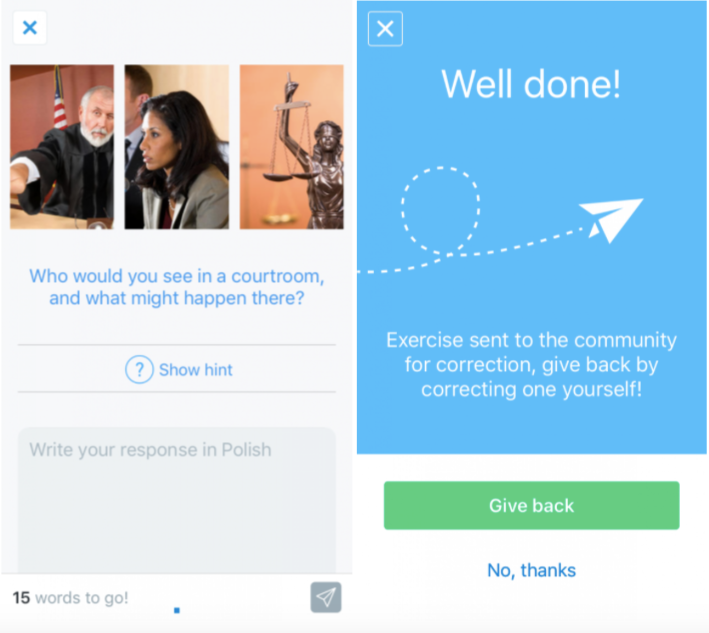Iza Kozlowska
“Don’t just learn languages, fall in love with them!”
This is Busuu’s rallying cry. The social network for language learning now has almost 60 million users worldwide and its rise fits in the fast growing-trend of E-learning and M-learning (mobile learning). Seems that we love to improve our communication skills for work, for travel or for our friends abroad. I used the Busuu app for one week, to find out how it brings motivation through the 8 Core Drives.
Let’s find out whether I manage to fall in love with Busuu, shall we?
Busuu’s 4 Experiences Phases
In The Octalysis Group we like to divide a user experience 4 distinct Experience Phases: Discovery, Onboarding, Scaffolding, and Endgame. The objectives, motivation, and feelings a user has while using a product on day one is very different from their experience on day one hundred. I will analyze the Busuu experience through these Experience Phases.
Discovery Phase – Why would the user use my service to begin with?
The Discovery Phase of a player’s journey starts when the player first gets to know and learns about your product or service. In this phase the user will decide if s/he wants to even try out the app. I learned about the app via a friend who told me that I could use Busuu to improve my language skills. The first contact with the app for me is through my mobile as Busuu can be downloaded from the App Store.
In the app description I can see that 60 million international native speakers are using the app, that is a strong Social Proof (Core Drive 5: Social Influence and Relatedness)!
There is also a very catchy introduction: “Don’t just learn languages, fall in love with them!”. O.K.! I am starting to feel excited! And look, reviews by users are mostly positive, adding even more Social Proof. “Hey, other people similar to me love this app. Maybe I should love it too!”
After installing the app I get a welcoming page with a “Get started” button. Thanks to the uncluttered design, it is immediately clear what the Desired Action is. Let’s get started!
Before asking the user to sign up, we should try to generate a push for people to even want to do this. One way to introduce the app is through graphics slides showing the value proposition of your product, perhaps 3-4 images with 1-2 sentences each or a 1-minute video. Keep in mind these videos should not be on “how” to use the product, but “why” they should use the product. Another option is to let users already make some progress without signing up, and when they reach a Win-State – boom! – “Please sign up”.
OK, now I can choose the language I want to learn. There’s quite an abundance of languages to choose from. After choosing a language (I went with Polish), I am being asked to sign up.
The sign-in is not badly done, but you want this to be very intuitive. By limiting the number of log in options to only Facebook and E-mail, the app could provide cognitive ease for the user, resulting in more sign-ups.
Recommendation – Discovery Phase
- In the beginning of the user’s journey, use more Social Proof to communicate and relate to the user, encouraging them to venture forth.
- Let the user try out the product before sign-in
- Consider giving a small reward after sign-in. It could even be as simple as a message saying, “Welcome onboard! You are the 7,000th user from Poland. And the 30 millionth person who wants to learn English!”
The Discovery Phase ends when your client starts to use your product. Once the user tries out your product or service, the Onboarding Phase has started.
Onboarding Phase – How do users learn the basic tools to play the game?
During the onboarding phase, the users become familiar with the rules of the game, the options, the mechanics, and the win-states. In the Busuu app I am starting with a screen with multiple options. I’m not sure what I should do next. That can lead to reducing Core Drive 2: Developmet and Accomplishment and as a result, increase Core Drive 8: Loss and Avoidance of Loss. Users like to feel smart and once they feel frustrated and incapable, Core Drive 8 turns it into an Anti Core Drive, making it more likely for them to drop out.
The yellow button “Get fluent faster” caught my eye. After clicking on it I can see the benefits of buying a premium version of the app but I didn’t even try out the app yet! Why would I want to upgrade the app before knowing what I have now? This feature should only appear after reaching a major win-state. At that time, I will have build up enough CD4: Ownership and Possession to value the experience enough to possibly want more of it. Mainly this will happen after the user has used the app for a while though.
I was slightly puzzled by what I have to do in this app. Should I take my first lesson? Update my profile? Never make the user feel confused about what to do next. The Onboarding Phase especially needs to make me feel smart and accomplished and shouldn’t leave me thinking twice what to do next.
In this Phase you can lead the user through all the first Desired Actions. This is best accomplished through an interactive step-by-step tutorial where you get the user to commit to the Desired Actions you designed, and rewarding them with small High-Fives (Octalysis Game Technique #17) once they accomplish it. This technique will help users to get to know the app better and to use it as much as possible. For example, I was a little lost, both on the first screen of the app, and during the first task “Lesson 1”. We know from the experience that if users spend more than 4 seconds on a screen and does not know what to do, you have lost them.
I also went to “My Profile”. I’ve tried to click on the Avatar to change my icon, but nothing happened. I assume that I can change it in the settings option. But it would be much easier for me if I can just click on this icon and set my profile picture. Having the profile picture or avatar is important because it increases Core Drive 4: Ownership & Possession.
As you can see, I have “0 Votes Cast” and “0 Upvotes”. Right now, I don’t even know what they are. It’s never good to show users that they have ZERO of something. Consider showing “Votes Cast” and “Upvotes”, only after the user will get the first “points” or have a message that triggers them to take action: “you can go to X and gain Votes!”. Again it is always better to be clear about the Desired Actions.
Recommendation – Onboarding Phase
- During the learning phase of the app, it’s important that the user doesn’t feel lost or confused. Consider using the Step-By-Step Overlay Tutorials (Game Technique #6). A Step-By-Step Overlay Tutorial slowly guides the user where to go (using Glowing Choices, Game Technique #28).
- The system needs to reward a user when a Desired Action is taken. For example, if it’s important to upload a photo, the system should make that really obvious and easy to do reward the user immediately afterwards.
- Avoid blank pages and empty stats. Every time the user has an empty page or stats the system should inform him what to do to make a change. Otherwise the user feels unmotivated.
The onboarding phase ends when your users are fully equipped and they are ready to take on the journey on their own.
Scaffolding Phase – How to make the journey fun?
During the third phase of the experience, users are familiar with all the rules and options they learned during onboarding to try to achieve as many Win-States as possible. Ideally this is where they come back on a regular basis to commit to Desired Actions.
Let’s start the first lesson! I want to learn Polish. First lesson pages look really good. They are clear, and include small introductions of what I will experience in a minute.
The first task is to hear some new phrases. The full colours, smiling faces, friends all look very pleasing to the eye. Also I can press play to hear the phrase repetitively.
I took a small test after the first lesson, finally got my first win-state! The colour green is giving me a thrill, especially as it is accompanied by a cool win sound. This is Core Drive 2, Game Technique #17 (High Five) an emotional reward that is given after overcoming a small quick challenge. All good!
I answered the second question wrong and a red feedback UI appeared. The message is clear – red colour means wrong. But, I’m not getting any feedback on what the correct answer is, and I can’t correct my mistake… leaving me with an unpleasant feeling. The user should always feel motivated and empowered to be able to get it right soon.
UI Note: Remember that in previous pages Busuu presented a wrong answer to users with the colour red. Now “try again” is also red, which suggests that it’s a bad choice. This is slightly confusing.
Busuu has one more interesting option for the user. Writing is something that e-learning for language skills always has a problem with, but Busuu deals with that problem smoothly!
The idea is that you can write a short response for a question dedicated to the theme of the lesson. The system counts the words, and encourages the user to write more. After sending my text I got this message “Exercise sent to the community for correction, give back by correcting one yourself!”. It’s Core Drive 5: Social Influence and Relatedness and Game technique #63, Social Treasures: incentives that can only be received if other users give to you. It is also Core Drive 7: Unpredictability & Curiosity, because the user doesn’t know yet, what feedback will be received. Also it’s great Core Drive 5, when the user depends on other players. It’s a cool idea to share my work with others, and to be corrected by the community.
Recommendation – Scaffolding Phase
- This is the moment when real action should take place. Also this is the moment when the first major win-state should happen. Try to give users something to be proud of! Show them feedback on their progress, accomplishment, and how much left is needed.
- After the user reaches the major win-state, the system can give him more Desired Actions such as: Go get Premium Membership, Invite your friends. The First Major Win-State is when a User first says, “Wow! This service/experience is awesome!”
- Busuu could consider making the platform even more social. Let the users see who else from their Facebook or Google+ friends are also on Busuu and ask them to invite their friends on the platform (game technique #54 Recruiter Burden).
- I would also look for some statistics to increase Core Drive 2. It would be good if the user could see their weekly or monthly progress in the profile section.
- Consider leaderboards – with friends, but also between countries.
The Scaffolding phase ends when your users believe they have gone through the activity loop for long period of time. They are now a veteran user ready for the end game.
The Endgame – How to keep the veterans motivated?
The Endgame starts when players believe that they have done everything there is to do at least once and they start to feel like there are no longer any unexplored Win-States.
In Busuu, a free trial allows access to almost all of their functions. However, after using the app for a couple of days I am limited to only 3 exercises a day. This is Core Drive 6: Scarcity and Impatience, Torture Break Game Technique: a sudden pause to the Desired Actions for a limited time. If I don’t opt for premium I will only have three free exercises a day! In this screen the graphics look little bit sloppy. They cover the text and it is hard to read what is underneath. So I was left with the choice: wait until tomorrow or get unlimited access.
Recommendation – Endgame Phase
- What about gathering friends from all around the world and enable live chat? They could give each other feedback in real time! You can find a similar idea in the Tandem app. (http://www.tandem.net)
- Think of rewarding users that are using the app daily.
- Add more Core Drive 5, Social Influence & Relatedness. How about Mentorship, game technique #61? Veteran users could help a newbie with tasks.
- Also the Rockstar Effect GT#92 (Core Drive 2), could make the users feel powerful at the Endgame Phase. Make people feel like they have “earned” their way to become a Rockstar.
- Think about spicing up the application with more Core Drive 6, Core Drive 7 and Core Drive 8. A little bit of the Black Hat Core Drives can make users be more motivated. You can use game techniques: Evolved UI #37, Random Rewards (Mystery Box) #72, Easter Eggs (Sudden Rewards) #30, Evanescent Opportunities #86, FOMO Punch #84, The Sunk Cost Prison #50. But you need to keep in mind that in the long run Black Hat techniques can make users feel like they’ve lost control of their own behaviours. A good balance between Black Hat and White Hat is very important.
My Busuu experience was an exciting journey through all of the Experience Phases! Overall Busuu has a decent motivational push, but it needs to be improved in a couple of areas. It would be great if Busuu could show a good Step-by-Step Overall Tutorial, to prevent the user from feeling lost. What Busuu needs to do more is to make sure that the user feels powerful, accomplished, and smart. I want more win-states in the app! Also the platform could be more social and interactive between users.
All in all, I didn’t fall in love with Busuu, but let me say that this could be the start of a good friendship!
iza[at]octalysisgroup[dot]com
This blog has been verified by Rise: R08785af0d0bfc93c6370e0a06d74e2bf
